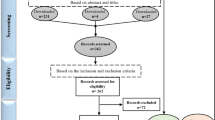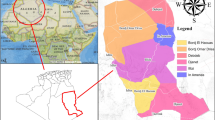Abstract
Water quality forecasting in agricultural drainage river basins is difficult because of the complicated nonpoint source (NPS) pollution transport processes and river self-purification processes involved in highly nonlinear problems. Artificial neural network (ANN) and support vector model (SVM) were developed to predict total nitrogen (TN) and total phosphorus (TP) concentrations for any location of the river polluted by agricultural NPS pollution in eastern China. River flow, water temperature, flow travel time, rainfall, dissolved oxygen, and upstream TN or TP concentrations were selected as initial inputs of the two models. Monthly, bimonthly, and trimonthly datasets were selected to train the two models, respectively, and the same monthly dataset which had not been used for training was chosen to test the models in order to compare their generalization performance. Trial and error analysis and genetic algorisms (GA) were employed to optimize the parameters of ANN and SVM models, respectively. The results indicated that the proposed SVM models performed better generalization ability due to avoiding the occurrence of overtraining and optimizing fewer parameters based on structural risk minimization (SRM) principle. Furthermore, both TN and TP SVM models trained by trimonthly datasets achieved greater forecasting accuracy than corresponding ANN models. Thus, SVM models will be a powerful alternative method because it is an efficient and economic tool to accurately predict water quality with low risk. The sensitivity analyses of two models indicated that decreasing upstream input concentrations during the dry season and NPS emission along the reach during average or flood season should be an effective way to improve Changle River water quality. If the necessary water quality and hydrology data and even trimonthly data are available, the SVM methodology developed here can easily be applied to other NPS-polluted rivers.










Similar content being viewed by others
References
Acir N (2006) A support vector machine classifier algorithm based on a perturbation method and its application to ECG beat recognition systems. Expert Syst Appl 31:150–158
Adankon MM, Cheriet M (2009) Model selection for the LS-SVM. Application to handwriting recognition. Pattern Recogn 42:3264–3270
Al-Abed N, Al-Sharif M (2008) Hydrological modeling of Zarqa River Basin–Jordan using the Hydrological Simulation Program-FORTRAN (HSPF) model. Water Resour Manag 22:1203–1220
Alexander RB, Elliott AH, Shankar U, Mcbride GB (2002) Estimating the source and transport of nutrients in the Waikato River Basin, New Zealand. Water Resour Res 38:1268–1290
Antanasijević D, Pocajt J, Povrenović D, Perić-Grujić A, Ristić (2013) Modelling of dissolved oxygen content using artificial neural networks: Danube River, North Serbia, case study. Environ Sci Pollut Res 20:9006–9013
Arnold JG, Fohrer N (2005) SWAT2000: current capabilities and research opportunities in applied watershed modelling. Hydrol Process 19:563–572
Belousov AI, Verzakov SA, von Frese J (2002) Applicational aspects of support vector machines. J Chemom 16:482–489
Borah DK, Bera M (2004) Watershed-scale hydrologic and nonpoint-source pollution models: review of applications. Trans ASAE 47:789–803
Burges CJC (1998) A tutorial on support vector machines for pattern recognition. Data Min Knowl Disc 2:121–167
Chen D, Lu J, Shen Y (2010) Artificial neural network modelling of concentrations of nitrogen, phosphorus and dissolved oxygen in a non-point source polluted river in Zhejiang Province, southeast China. Hydrol Process 24:290–299
Chen D, Lu J, Shen Y, Gong D, Deng O (2011) Spatio-temporal variations of nitrogen in an agricultural watershed in eastern China: catchment export, stream attenuation and discharge. Environ Pollut 159:2989–2995
Conley DJ, Smith WM, Cornwell JC, Fisher TR (1995) Transformation of particle-bound phosphorus at the land sea interface. Estuar Coast Shelf Sci 40:161–176
Demuth H, Beale M, Hagan M (2009) Neural network toolbox user’s guide for use with MATLAB version 6.0.2. The MathWorks Inc, Natick
Dimopoulos Y, Bourret P, Lek S (1995) Use of some sensitivity criteria for choosing networks with good generalization ability. Neural Process Lett 2:1–4
Dogan E, Sengorur B, Koklu R (2009) Modeling biological oxygen demand of the Melen River in Turkey using an artificial neural network technique. J Environ Manag 90:1229–1235
Dutta M, Basu JK (2013) Application of artificial neural network for prediction of Pb(II) adsorption characteristics. Environ Sci Pollut Res 20:3322–3330
Gevrey M, Dimopoulos L, Lek S (2003) Review and comparison of methods to study the contribution of variables in artificial neural network models. Ecol Model 160:249–264
Huang CL, Wang CJ (2006) A GA-based feature selection and parameters optimization for support vector machines. Expert Syst Appl 31:231–240
James WF, Barko JW, Eakin HL (2002) Water quality impacts of mechanical shredding of aquatic macrophytes. J Aquat Plant Manag 40:36–42
Khalil A, Almasri MN, McKee M, Kaluarachchi JJ (2005) Applicability of statistical learning algorithms in groundwater quality modeling. Water Resour Res 41
Kuo JT, Hsieh MH, Lung WS, She N (2007) Using artificial neural network for reservoir eutrophication prediction. Ecol Model 200:171–177
Lek S, Guiresse M, Giraudel JL (1999) Predicting stream nitrogen concentration from watershed features using neural networks. Water Res 33:3469–3478
Li Y, Zhang JB (1999) Agricultural diffuse pollution from fertilisers and pesticides in China. Water Sci Technol 39:25–32
Lin GF, Chen GR, Wu MC, Chou YC (2009) Effective forecasting of hourly typhoon rainfall using support vector machines. Water Resour Res 45
Ma X, Li Y, Zhang M, Zheng F, Du S (2011) Assessment and analysis of non-point source nitrogen and phosphorus loads in the Three Gorges Reservoir Area of Hubei Province, China. Sci Total Environ 412–413:154–161
Madsen JD, Chambers PA, James WF, Koch EW, Westlake DF (2001) The interaction between water movement, sediment dynamics and submersed macrophytes. Hydrobiologia 444:71–84
Maier HR, Dandy GC (2000) Neural networks for the prediction and forecasting of water resources variables: a review of modelling issues and applications. Environ Model Softw 15:101–124
May DB, Sivakumar M (2009) Prediction of urban stormwater quality using artificial neural networks. Environ Model Softw 24:296–302
Noori R, Hoshyaripour G, Ashrafi K, Araabi BN (2010) Uncertainty analysis of developed ANN and ANFIS models in prediction of carbon monoxide daily concentration. Atmos Environ 44:476–482
Pan G, Krom MD, Zhang M, Zhang X, Wang L, Dai L, Sheng Y, Mortimer RJG (2013) Impact of suspended inorganic particles on phosphorus cycling in the yellow river (China). Environ Sci Technol 47:9685–9692
Raike A, Pietilainen OP, Rekolainen S, Kauppila P, Pitkanen H, Niemi J, Vuorenmaa J (2003) Trends of phosphorus, nitrogen and chlorophyll a concentrations in Finnish rivers and lakes in 1975–2000. Sci Total Environ 310:47–59
Robert HN (1989) Theory of the back-propagation neural network. Proceedings of International Joint Conference on Neural Networks; IEEE Press: Washington, USA 1:593–605
Sanchez VD (2005) Advanced support vector machines and kernel methods. Neurocomputing 55:5–20
Selig U, Hubener T, Michalik M (2002) Dissolved and particulate phosphorus forms in a eutrophic shallow lake. Aquat Sci 64:97–105
Shan CF, Gong SG, McOwan PW (2009) Facial expression recognition based on local binary patterns: a comprehensive study. Image Vis Comput 27:803–816
Singh KP, Basant N, Gupta S (2011) Support vector machines in water quality management. Anal Chim Acta 703:152–162
Smola AJ, Scholkopf B (2004) A tutorial on support vector regression. Stat Comput 14:199–222
Stabel HH, Geiger M (1985) Phosphorus adsorption to riverine suspended matter-implications for the P-Budget of lake constance. Water Res 19:1347–1352
Thiessen U, van Brakel R, de Weijer AP, Melssen WJ, Buydens LMC (2003) Using support vector machines for time series prediction. Chemometr Intell Lab 69:35–49
Vapnik V, Golowich S, Smola AJ (1997) Support vector method for function approximation, regression estimation, and signal processing. Adv Neural Inf Process Syst 9:281–287
Wang Y, Zheng T, Zhao Y, Jiang J, Wang Y, Guo L, Wang P (2013) Monthly water quality forecasting and uncertainty assessment via bootstrapped wavelet neural networks under missing data for Harbin, China. Environ Sci Pollut Res 20:8909–8923
Young RA, Onstad CA, Bosch DD, Anderson WP (1989) AGNPS—a nonpoint-source pollution model for evaluating agricultural watersheds. J Soil Water Conserv 44:168–173
Acknowledgments
This work was supported by the Special Fund for Agro-scientific Research in the Public Interest (No. 200903003) and Chinese National Key Technology R&D Program (No. 2012BAC17B01). We thank Zhejiang Provincial Government Hydrology Office for providing relevant data for the Changle River Watershed.
Author information
Authors and Affiliations
Corresponding author
Additional information
Responsible editor: Michael Matthies
Rights and permissions
About this article
Cite this article
Liu, M., Lu, J. Support vector machine―an alternative to artificial neuron network for water quality forecasting in an agricultural nonpoint source polluted river?. Environ Sci Pollut Res 21, 11036–11053 (2014). https://doi.org/10.1007/s11356-014-3046-x
Received:
Accepted:
Published:
Issue Date:
DOI: https://doi.org/10.1007/s11356-014-3046-x




